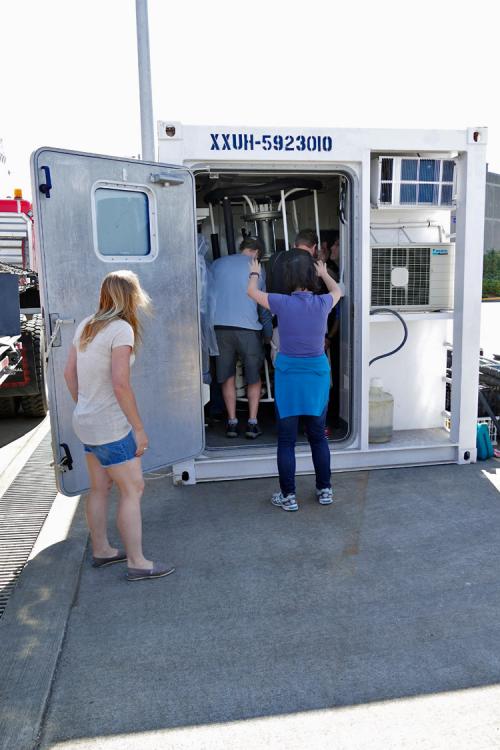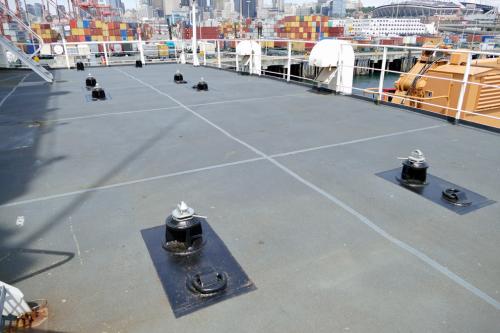GO DEEPER DISCUSSION: (see previous journal for the questions.)
The bubble doesn’t need to be tightly closed, or have every tiny seam sealed, because air being blown in by the Mac 10 filters needs to have a way back out. This air flow, going from the HEPA filters, through the bubble, and out the door or under the walls is how the concept of positive pressure works. It keeps a constant supply of clean, fresh air circulating through the bubble and keeps it inflated, but not like blowing up and tying off a balloon. The positive pressure also keeps airborne contaminants from sneaking in under the walls or through the door.
TODAY'S JOURNAL:
The dedicated lab spaces aboard Healy are extensive and impressive. Here is a summary of the space available onboard:
- Science Wet Lab 390 sq. ft.
- Main Science Lab 1233 sq. ft.
- Science Staging Area - Aft 300 sq. ft.
- Science Staging Area - Starboard 325 sq. ft.
- Science Dry Assembly Area 153 sq. ft.
- Biological/Chemical Analysis Lab 310 sq. ft.
- Science Freezer 130 sq. ft.
- Science Refrigerator 130 sq. ft.
- Electronics/Computer Lab 582 sq. ft.
- Photography Lab 105 sq. ft.
- Future Science Lab 546 sq. ft.
- Meteorological Lab 124 sq. ft.
- ClimateThe average weather over a particular region of the Earth. Climate originates in recurring weather phenomenon that result from specific types of atmospheric circulation. Control Chambers (2) 206 sq. ft.
Even with all of these options, there’s another important choice that scientists can use for lab space- bringing their own! Mobile, self-contained labs known as science vans can be set up to meet the requirements of a research team at their home institution. Once ready it can be put on a truck, train, or ship for transportation to the cruise departure destination. They are the size of a standard 20-foot shipping container, and so they can be transported and secured within the existing intermodal container shipping system. When the van reaches the cruise departure port, it can be anchored to the deck of the ship and voila- with minimal onboard preparation the lab is good to go!



During our preparations in Seattle, we loaded 6 science vans aboard Healy. Three are now secured outside the main lab on the forward end of the fantail, one is alongside on the starboard weather deck, and two are up front on the forecastle, an open deck one level above the main bow deck. Expect to hear & see more about the science going on in these mobile labs as the cruise gets underway!


GO DEEPER!
What do you think are some advantages of employing science vans on an oceanographic expedition? What do you think are some possible disadvantages?
That's all for now. Best- Bill


Comments